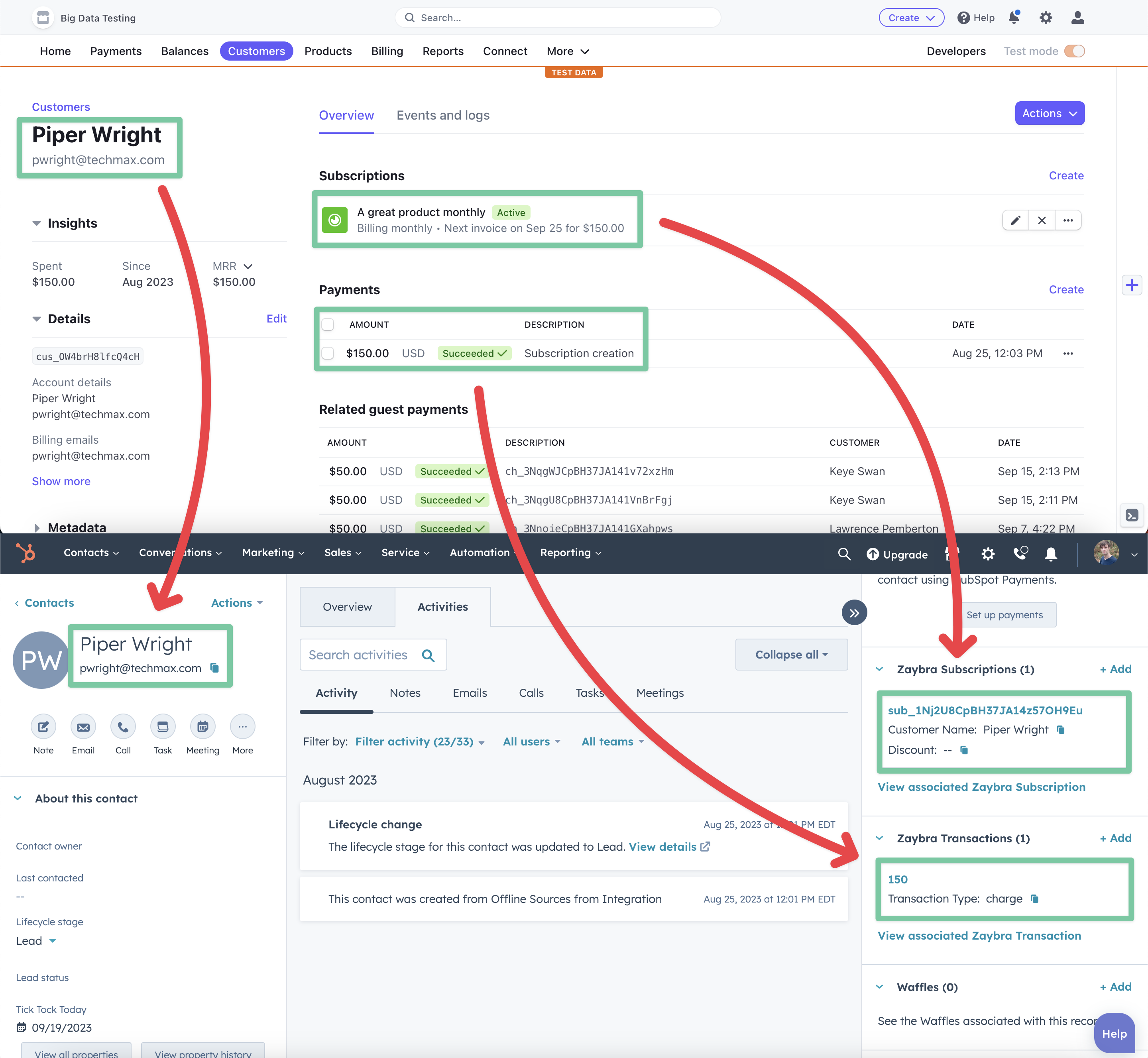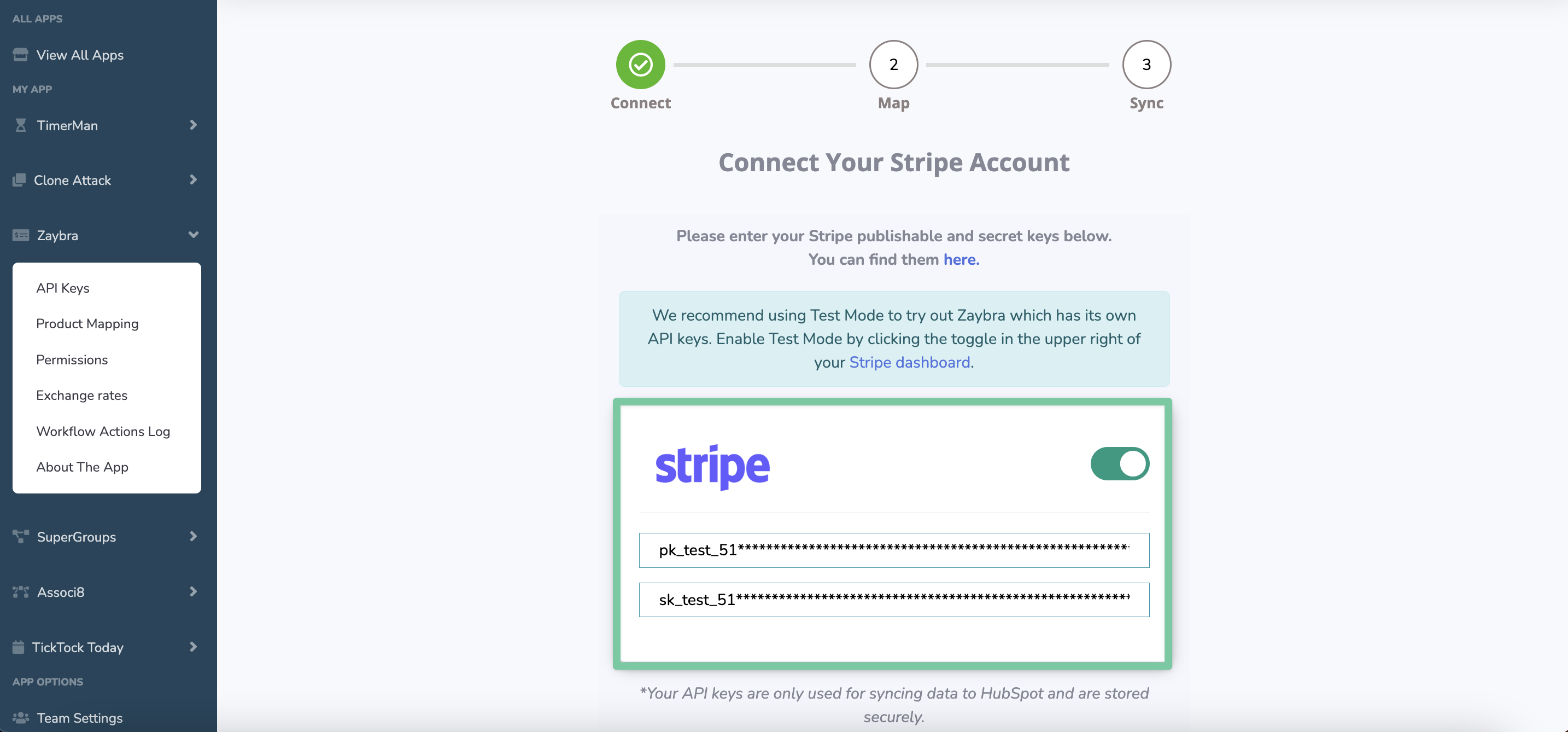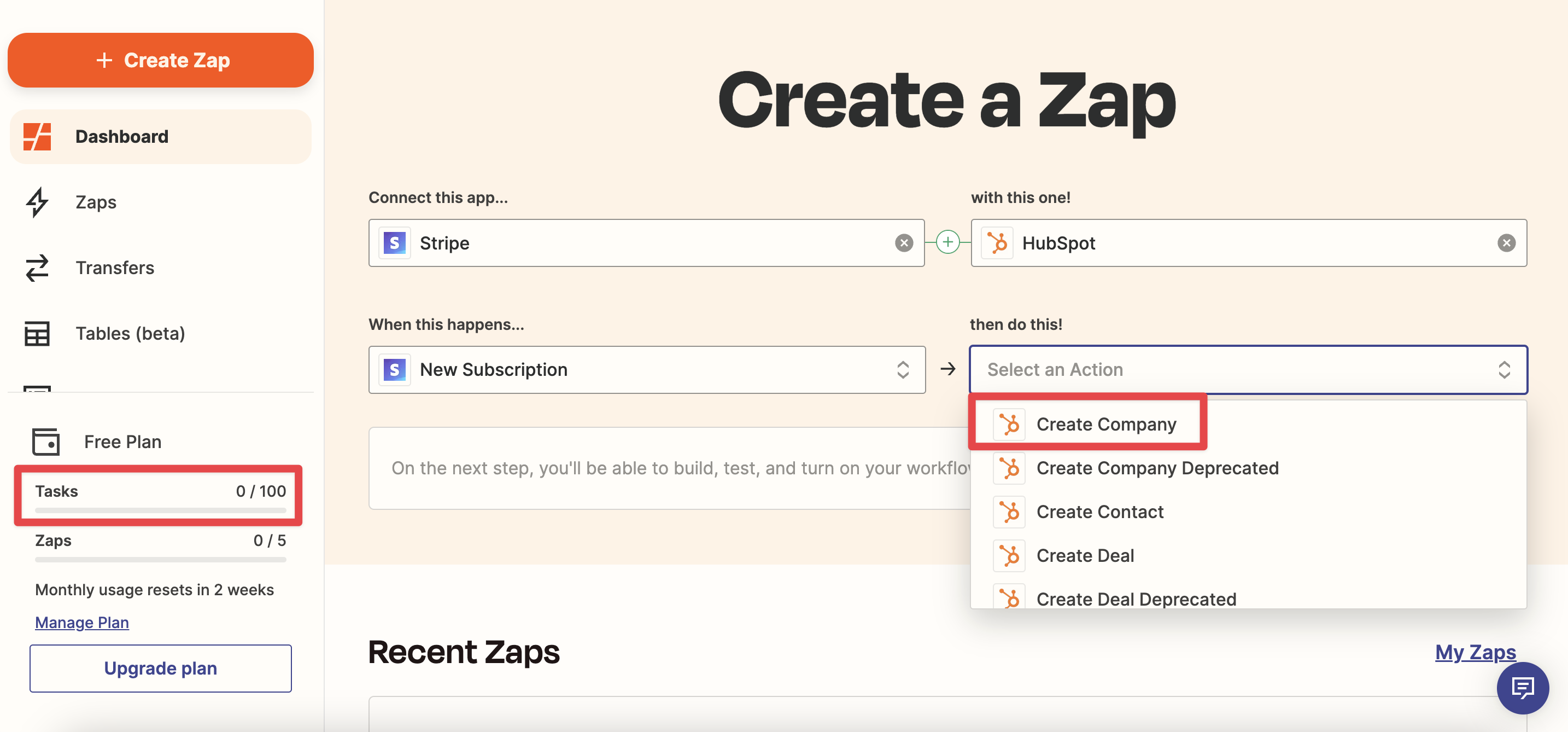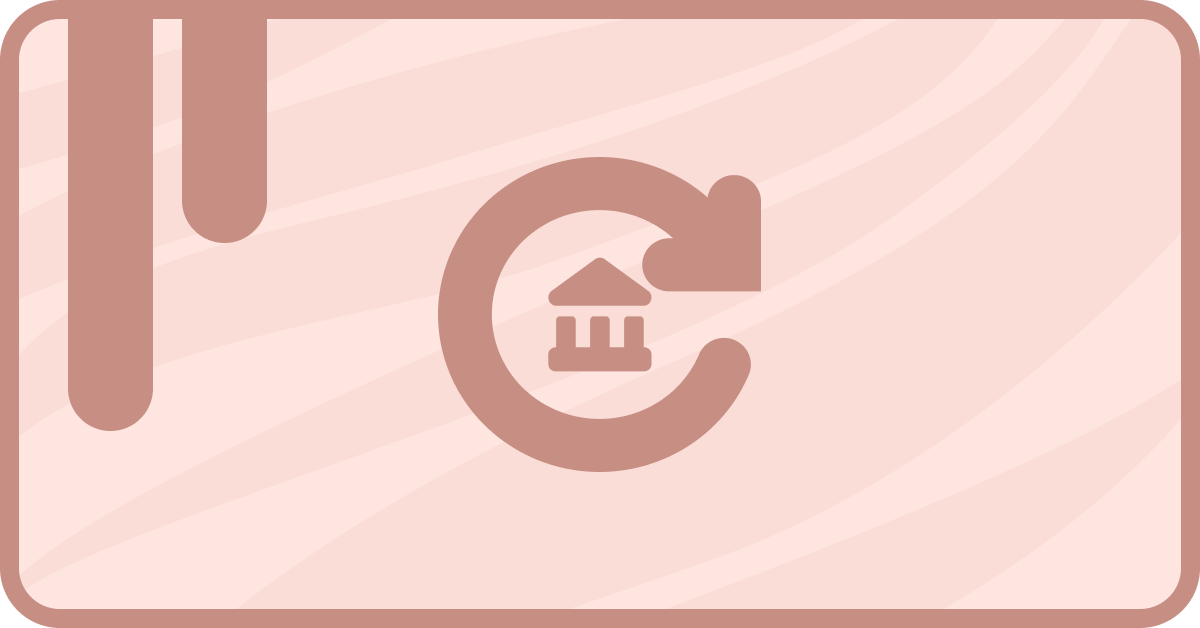Stripe and HubSpot are a powerhouse pair for managing your business. Stripe helps you process payments, and HubSpot helps you manage… everything else! To properly harness their mutual effectiveness, you need an equally effective integration to get your Stripe data into HubSpot.
Finding the right business solutions can be a mammoth task. You’ve scoured the vast lands of the internet, gone on a magical journey of self-discovery, and even defeated a dark lord on the way (nice going). You finally discovered two Stripe - HubSpot integrations: saas•hapily and Zapier.
While they can both get the job done, one does it noticeably better than the other. Let’s take a look at how these two apps unite your Stripe and HubSpot.
How saas•hapily integrates your Stripe data with HubSpot
For Stripe+HubSpot users, saas•hapily has a definite edge over Zapier. This is because saas•hapily creates object records upon syncing your Stripe data to HubSpot. Stripe Customers, Subscriptions, and Transactions will be synced to HubSpot as Contacts, hapily subscriptions, and hapily transactions.
Did I mention there’s no limit to the customers, transactions, or subscriptions you can sync? Because there’s no limit. It doesn’t matter if you have 3 records in your Stripe account, or 3000. saas•hapily will bring them over, along with any you add later on!
saas•hapily enables those hassle-free syncs by constantly monitoring your Stripe account. If any changes are made to your records in Stripe, you can be certain saas•hapily will update them in HubSpot.
Not only are these syncs hands-off, they're also fast. Simply enter your Stripe keys into your hapily user portal during setup, click Start Sync, and saas•hapily will take care of the rest.
How Zapier integrates your Stripe data with HubSpot
Let me make one thing clear: we at hapily love Zapier. It’s a great all-around automation solution. However, it tends to work its best for smaller-scale automations.In Zapier, you create “Zaps” for every automation you need. These Zaps can certainly be used to bring over and update records in HubSpot. But there’s the catch:
The major downside to using Zaps to sync data into HubSpot is that you have to create each Zap individually.
That’s no big deal if you only want Contact records brought over, or only need a few individual Stripe updates to reflect in HubSpot. However, if say you want all your Stripe data to be brought over - and all your Stripe updates to reflect in HubSpot - you’d have to create a Zap for each and every one.
New customer created in Stripe? Make a Zap for it. New subscription? Make a Zap for it. Furthermore, each Zap only establishes a one-way integration.
Additionally, the triggers (as well as the types of updates you can make to those triggers) are pretty limited. For example, you can’t bring over subscriptions as HubSpot custom object records. You would need to rely on HubSpot's standard objects to get the job done.

Finally, even Zapier's highest-tier plans cap the amount of tasks that can be carried out using Zapier at 2,000 per month. If you have a big business, or are looking to scale in the near future, those task limits could quickly restrict you.
Despite Zapier's clear benefits in many use cases, using it for a massive integration project like Stripe-to-HubSpot would prove tedious and time-consuming. All of the automations you would have to configure manually in Zapier come pre-built and out-of-the-box with every install of saas•hapily.
Zapier also has that pesky task limit, while saas•hapily invites you to keep shoveling work onto its plate. saas•hapily is simply a better fit to take advantage of Stripe and HubSpot together.
If you enjoyed this post, why not share it with your friends? And if you want to see what else saas•hapily can do, check out this blog post on 5 Ways saas•hapily Keeps Your HubSpot and Stripe Data Up to Date!






